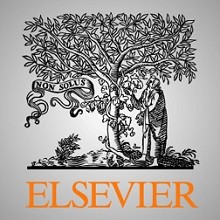
بهینه سازی سیستم تولید از طریق تولید در کلاس جهانی
چکیده
همه شرکت ها با یک سوال مشابه دست و پنجه نرم می کنند: چگونه می توانیم ارائه دهیم ، با هزینه های کمتر و زمان تحویل قابل قبول خصوصا محصولات و خدماتی که ارزش افزاده را برای مشتریان به همراه دارند. روش های مختلف برای حل این مشکل وجود دارد: لین ( سازمان با ارزش افزوده) ، سیگما شش ( سازمان کامل) ، TOC ( سازمان نا محدود) ، TPM ( سازمان بدون اشکال ) ، RCM ( سازمان قابل اعتماد) و QRM ( سازمان سلولی). علاوه بر این ، ترکیبی از این روش ها نیز وجود دارد. مانند سیگما شش لین ( سازمان با ارزش افزوده و سازمان کامل) و کلاس جهانی ( ارزش افزوده و سازمان های کامل و بی اشکال). هدف این کار پژوهشی ایجاد یک مدل مبنایی از WCM برای سیستم لجستیک در صنعت خودرو سازی به منظور بهبود استاندارد های کاری است. نتیجه این تحقیق نیز منجر به توسعه اصول در اهداف استراتژیک ، سیستم اندازه گیری عملکرد و اتصالات سیستم اندازه گیری عملکرد برای بهبود هماهنگی سازمانی است.
Abstract
Each company struggles with the same question: How can I provide - at the lowest possible costs and with an acceptable delivery time - products or services that add maximum value for my customers? Firms must develop strategic objectives which result in a competitive advantage in the market place. There are many different methods which address this problem: Lean (the value adding organization), Six Sigma (the perfect organization), TOC (the unlimited organization), TPM (the smooth organization), RCM (the reliable organization) and QRM (the cellular organization). In addition, combinations of these methods exist, like Lean Six Sigma (value adding and perfect organization) and World Class (value adding and perfect and smooth organization). The aim of this work is to present establishments of the basic model of WCM for the logistics system in the automotive industry in order to improve the work standards. The result of this research was to develop principles on strategic objectives, performance measurement systems and performance measurement system linkages for improved organizational coordination.
چکیده
مقدمه
سیستم تولید کلاس جهانی
مطالعه موردی
لجستیک ها & خدمات مصرف کننده
تعریف و پیاده سازی مطالعه موردی
نتیجه گیری ها
Abstract
INTRODUCTION
WORLD CLASS MANUFACTURING SYSTEM
CASE STUDY
Logistics & Customer Service
Definition and implementation of the case study
CONCLUSIONS
- ترجمه فارسی مقاله با فرمت ورد (word) با قابلیت ویرایش، بدون آرم سایت ای ترجمه
- ترجمه فارسی مقاله با فرمت pdf، بدون آرم سایت ای ترجمه
